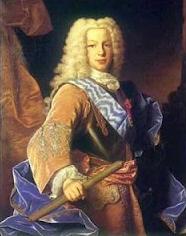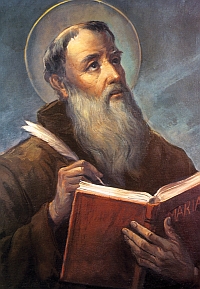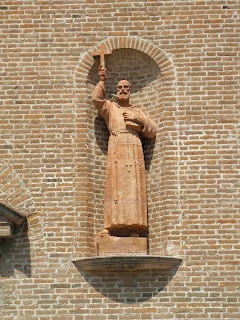 |
| The composer Giacomo Facco was born near Padova |
He was highly regarded during his own lifetime, but his compositions were forgotten until 1962, when they were rediscovered by a musicologist, Uberto Zanolli.
Facco is believed to have worked as a violinist and a conductor early in his career and is known to have been given a job in 1705 by the Viceroy of Sicily as a choirmaster, teacher and violinist in Palermo .
In 1708 he moved with the Viceroy to Messina where he composed The Fight between Mercy and Incredulity. In 1710 he presented a work dedicated to King Philip V of Spain , The Augury of Victories, in Messina Cathedral.
By 1720 it is known Facco was working in the Spanish court because his pay is mentioned in a report dating from that year. He is later named as clavichord master to the Spanish princes.
At the height of his success he was commissioned to compose an opera to celebrate the marriage of one of the princes in 1721.
But he then seems to have fallen out of favour and was just employed as a violinist in the orchestra of the Royal Chapel until his death in Madrid in 1753.
The composer had earlier written 12 violin concertos under the title Pensieri Adriarmonici. Bright and buoyant, they are reminiscent of the music composed by his contemporary, Vivaldi.
These concertos were discovered in a library in Mexico City by Uberto Zanolli in 1962 along with Facco’s birth certificate, showing he was born near Padova. Since his remarkable discovery, Zanolli has put together a biography of Facco and a list of his known works.
 |
| The walled city of Castelfranco Veneto |
Some of Facco’s solo cantatas, written using his own poetry, were presented at a concert in Mexico City in 1962, conducted by Zanolli.
But it is thought other music Facco wrote in Spain may have been destroyed in a fire in Madrid in 1734.
Facco was born and spent his early years in the hamlet of Marsango in the commune of Campo San Martino about 15 kilometres north of Padua in the beautiful countryside of the Veneto . Marsango lies between the cities of Treviso and Vicenza , with the walled city of Castelfranco Veneto just to the north.
Home







